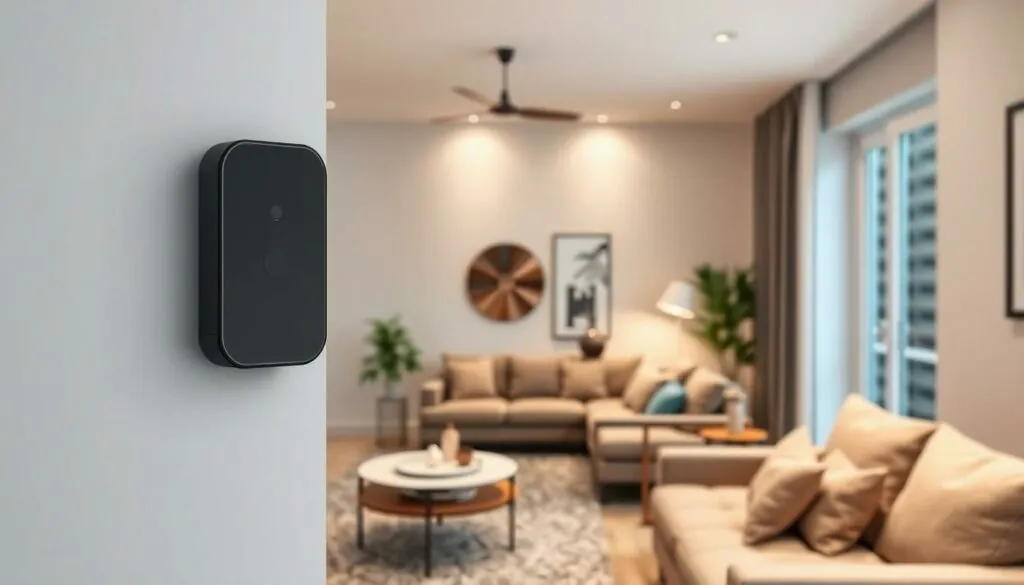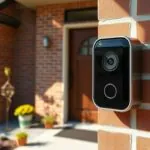Table of Contents
ToggleIn a world where even your toaster can be smarter than your average houseguest, smart home motion sensors are the unsung heroes of modern living. Imagine a device that not only knows when you’ve entered a room but also keeps the lights on and the security tight—now that’s a party trick worth bragging about.
These little gadgets are like the vigilant butlers of your home, silently watching over everything while you kick back and binge-watch your favorite series. With the ability to detect movement and send alerts straight to your phone, they add an extra layer of convenience and security, making it feel like you’ve got a personal bodyguard on duty. So let’s dive into the fascinating world of smart home motion sensors and discover how they can transform any living space into a savvy sanctuary.
Overview of Smart Home Motion Sensors
Smart home motion sensors stand as vital components in contemporary home automation. These devices detect movement by employing advanced technology like passive infrared or microwave sensors. Each technology operates differently, with infrared sensors responsive to heat emitted by bodies, while microwave sensors utilize electromagnetic waves to identify motion.
Data from industry reports shows that nearly 50% of homeowners invest in smart home devices, recognizing the added security and convenience offered. Smart motion sensors contribute significantly to this trend by enabling features such as automatic lighting control and real-time alerts. For instance, when motion is detected, users receive notifications through compatible apps, ensuring they stay informed about activities within their homes.
Integration with other smart devices enhances functionality. Smart motion sensors can trigger various responses, such as activating cameras, locking doors, or adjusting thermostats, depending on the user’s settings. This interconnectedness fosters a cohesive smart home ecosystem.
Installation typically requires minimal effort, as most sensors are designed for DIY setups. Battery-operated options exist, eliminating the need for complex wiring. Users can position these sensors at strategic locations, including doorways, hallways, or outdoor areas, maximizing their effectiveness.
Compliance with security standards also plays a role in selecting motion sensors. Many products on the market include features like tampering alerts or encrypted communication to protect against hacking attempts. Evaluating these aspects ensures that homeowners choose reliable and secure options for their smart environments.
Thus, smart home motion sensors emerge as indispensable tools that elevate security, convenience, and energy efficiency, helping to create a safer living space.
Benefits of Smart Home Motion Sensors

Smart home motion sensors offer numerous advantages that improve home security and energy efficiency. Understanding these benefits can help homeowners make informed decisions about their smart home setups.
Increased Security
Increased security is one of the primary benefits of smart home motion sensors. They monitor movement around the property, alerting homeowners to any unusual activity. Many devices can send real-time notifications to smartphones, enhancing personal safety. These sensors often integrate with security cameras, allowing for immediate video feeds upon detection of movement. Additionally, tampering alerts notify owners if someone attempts to disable the device, providing peace of mind. As more families prioritize home security, these sensors play a crucial role in safeguarding properties and protecting loved ones.
Energy Efficiency
Energy efficiency significantly improves with the use of smart home motion sensors. By automatically turning off lights and appliances when no one is present, these devices help reduce energy consumption. Homeowners can program specific schedules, ensuring that energy use aligns with their daily routines. With the ability to detect occupancy, sensors prevent wasted electricity, leading to lower utility bills. Smart home systems can also adjust heating and cooling based on movement, maintaining comfort while minimizing energy waste. Adopting these sensors not only conserves resources but also contributes to a more sustainable living environment.
How Smart Home Motion Sensors Work
Smart home motion sensors consist of crucial components that enable their efficient operation in homes. These devices include sensors, processors, and communication modules. Sensors detect movement, while processors analyze the information. Communication modules then relay this data to connected devices, creating a seamless smart home experience.
Key Components
Smart home motion sensors house several key components that enhance their functionality. The primary element comprises passive infrared sensors, which sense temperature changes caused by moving objects. Another vital part includes a microcontroller, responsible for interpreting sensor signals. Communication interfaces, such as Wi-Fi or Zigbee, allow the devices to connect to home networks. Batteries provide power, ensuring flexibility in placement. Together, these components facilitate reliable detection and robust communication.
Detection Technologies
Detection technologies vary among smart home motion sensors, impacting how they operate. Passive infrared sensors excel at detecting heat emitted by humans or animals. Microwave sensors use radar technology to identify movement by emitting and receiving microwave signals. Some systems combine both technologies, optimizing accuracy and reducing false alarms. Wireless technologies allow real-time alerts and seamless integration with other smart home devices, enhancing overall efficiency.
Popular Smart Home Motion Sensor Brands
Numerous brands specialize in smart home motion sensors, each offering unique features and benefits. Philips Hue stands out for its integration with smart lighting systems, enabling seamless automation based on detected movement. Ring provides motion sensors that complement its security cameras, enhancing home surveillance with real-time alerts.
Arlo offers versatile sensors that work with their entire ecosystem of security products, ensuring comprehensive home protection. Nest, recognized for its smart thermostat, also provides motion sensors that improve energy efficiency by adjusting heating and cooling based on presence.
Ecobee focuses on smart home integration, allowing its motion sensors to work harmoniously with their thermostats, optimizing comfort and reducing energy consumption. SmartThings delivers a platform that connects multiple devices, including various brands’ motion sensors, allowing for a cohesive smart home experience.
Wyze provides affordable options without compromising functionality, making smart home technology accessible for many homeowners. Eufy offers innovative motion detection with features like customizable activity zones, enabling users to tailor sensor responsiveness.
TP-Link, known for networking hardware, extends its expertise into the smart home realm with reliable motion sensors that integrate with other TP-Link products. Fibaro’s motion sensor stands out for its compact design and advanced features, including temperature sensing.
HomeSeer provides robust automation capabilities, ensuring sensors work effectively within complex home setups. Each brand plays a role in enhancing home security and convenience, catering to diverse preferences and budgets.
Smart home motion sensors are revolutionizing the way homeowners approach security and energy management. By seamlessly integrating with other smart devices they offer enhanced protection and convenience. Their ability to detect movement and automate responses not only ensures safety but also promotes energy efficiency.
With user-friendly installation and a variety of options available from trusted brands homeowners can easily find solutions that fit their needs. Embracing these innovative technologies paves the way for a smarter and more secure living environment. As the smart home trend continues to grow investing in motion sensors is a step toward a more efficient and protected home.





